At Oracle OpenWorld 2018, we announced a strategic partnership with AMD and launched the Oracle E2 platform on the first generation of AMD EPYC processors. Since that launch, we’ve deployed Oracle E2 Compute instances to all of our commercial regions. Eighteen months later, in April 2020, we built on this partnership and launched the E3 platform on the second generation. Many of our enterprise customers and Oracle Cloud applications are running general-purpose workloads on AMD EPYC processors. Today, I’m happy to announce that Oracle is launching the E4 platform based on third-generation AMD EPYC processors. The E4 platform includes both bare metal and flexible virtual machines (VMs).
These E4 standard instances use 64 core processors, with a base clock frequency of 2.55 GHz and a max boost of up to 3.5 GHz. The bare metal E4 standard Compute instance supports 128 OCPUs (128 cores and 256 threads) with 256 MB of L3 cache, 2 TB of RAM, and 100 Gbps of overall network bandwidth. This configuration is the highest core count for a bare metal instance on any public cloud. The memory bandwidth is well suited for both general-purpose and high-bandwidth workloads that require larger and faster memory.
As demonstrated in the following performance benchmarks, the E4 Standard instances deliver up to an estimated 15% increase in integer performance, an estimated 21% increase in floating point performance, and a 24% increase in Java performance, compared to E3 Standard instances. Also, the E4 instances provide three times better price performance relative to other general-purpose instances offered by other cloud providers.
New processors, better performance, and the same price as E3 Compute instances, combined with our flexible Compute approach, which enables you to granularly customize the core counts and memory of VMs, provide better value.
Many enterprise customers for Oracle applications and general-purpose workloads have adopted our AMD EPYC processor-based Compute instances. Our customers have already successfully deployed AMD-based instances, including the following use cases:
-
Video conferencing
-
Real-time video processing
-
Massively parallel processing and high-performance computing (HPC)
-
Business-critical applications
-
Web and application servers
-
Backend servers for enterprise applications
-
Gaming servers
-
In-memory database
-
Caching fleets
-
App development environments
Oracle customer Xactly, the leader in revenue intelligence solutions, uses Oracle’s AMD EPYC processor-based Compute.
“Oracle Cloud Infrastructure (OCI) is unique in providing customers with the granularity and flexibility in compute resources,” said Ron Rasmussen, CTO of Xactly. “Xactly has seen great, measured benefits from deploying E3 in operating our multi-tenant SaaS revenue intelligence solutions. Our multitenant SaaS solution is built on Java technology, and we look forward to extending the additional benefits of E4 to our customers in the near future.”
Key highlights
E4 instances continue the flexible infrastructure approach that we established with E3. You’re free to select the exact number of OCPUs and amount of memory that you need for a VM, not forced to choose from a fixed menu of 1, 2, 4, 8, or 16. You can launch any custom VM size that meets your needs, such as a 3-core, 6-core, or 63-core VM with anywhere from 1 GB–1 TB of memory.
These custom sizes mean lower costs. E4 instances bill separately for the OCPU and memory resources provisioned. Each OCPU comes with its associated simultaneous multithreading unit and is priced at US$0.025, and memory is priced at US$0.0015 per GB—the same prices as our E3 Compute instances. An E4 instance with 1-OCPU instance and 16 GB of RAM has a price of US$0.049, which is 23% less than X7 Standard and 57–61% less than comparable instances offered by other clouds.
E4 instances support reboot resize, so you can easily migrate from your existing compute instances to an E4 instance of compatible shape.
Instance availability
Table 1 shows the VM and the bare metal instances that are available at launch. These instances are available in the following regions, with plans to have instances widely available in all commercial regions in the future:
-
US East (Ashburn)
-
US West (Phoenix)
-
India west (Mumbai)
-
Switzerland North (Zurich)
-
Brazil East (Sao Paulo)
-
Canada Southeast (Montreal)
-
Australia southeast (Melbourne)
-
Canada Southeast (Toronto)
Table 1: E4 instances available at launch
| Instance | OCPU | Memory | Extra storage | Network |
| BM.Standard.E4.128 | 128 | 2,048 GB | Up to 1 PB of remote block storage | 100 Gbps |
| VM.Standard.E4.Flex | 1–64 | 1–64 GB per OCPU up to 1024 GB | Up to 1 PB of remote block storage | 1 Gbps per OCPU |
OCPU refers to a single core and its associated thread. We provide 1 Gbps per OCPU, up to a maximum of 40 Gbps.
Performance
We compared the AMD EPYC CPU-based instances to our current x86 standard alternatives. Table 2 shows detailed configurations.
Table 2: Compute configurations for performance tests
| System Configuration | X7 System | E3 System | E4 System |
| CPU | Two x86 processors, 26 cores per socket @ 2.0 GHz | Two AMD EPYC 7742, 64 cores per socket @ 2.25 GHz Base, and @3.4G Turbo | Two AMD EPYC 7J13, 64 cores per socket @ 2.55 GHz Base, and @3.5G Turbo |
| Memory | 768 GB DDR4 | 2,048 GB DDR4 | 2,048 GB DDR4 |
| Network | Two 25 Gbps | Two 50 Gbps | Two 50 Gbps |
We ran performance tests to exercise the CPU performance, floating point performance, and memory subsystem performance (see Table 3). We ran tests on vendor-recommended proprietary compilers and Oracle Linux operating systems. We ran the tests several times and averaged the results. All SPEC numbers are estimates.
Table 3: Performance tests and benchmark targets
| Test | Benchmark target |
| SPECrate 2017 Integer | Integer performance |
| SPECrate 2017 Floating Point | Floating point performance |
| STREAM Triad | Memory subsystem performance |
The following graphs show how the AMD E4 instances compared against our X7 and E3 Compute instances.
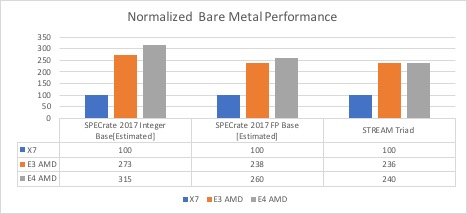
Figure 1: Normalized bare metal performance results
The third-generation AMD EPYC processor-based server performs well compared to our existing portfolio of bare metal Compute instances. The E4 Standard instances deliver up to an estimated 15% increase in integer performance and an estimated 9% increase in floating point performance compared to the E3 instances. Compared to the X7 standard instance, the E4 instance delivers an estimated 215% increase in integer performance, an estimated 160% increase in floating point performance, and an estimated 140% increase in STREAM Triad bandwidth.
Figure 2 shows the results of the benchmarks on VMs. All the tests were run on 2-core VMs.
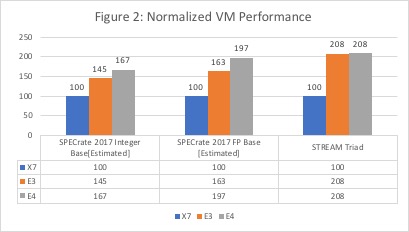
Figure 2: Normalized VM performance results
The server also performs well compared to our existing VM instances on this set of standardized benchmarks. The E4 standard instances delivered an estimated 15% improvement in integer performance per core and an estimated 21% improvement in floating point performance per core compared to E3 based instances. More notable is the comparison against X7 instances. The E4 standard instances delivered an estimated 67% improvement in integer performance, 97% improvement in estimated Floating point performance, and a 108% increase in memory performance over an X7 instance.
Java benchmarks
Apart from the standardized benchmarks, we also ran our internal Java benchmark to measure server-side Java performance. We ran the Java tests with an emphasis on the middle-tier performance. We ran the tests several times and averaged the results.
Table 4: Java performance test and benchmark target
| Test | Benchmark target |
| Server-Side Java Benchmark | Middle-tier performance |
Figure 3 shows the results of running the Java benchmark tests on X7, E3, and E4 bare metal instances.
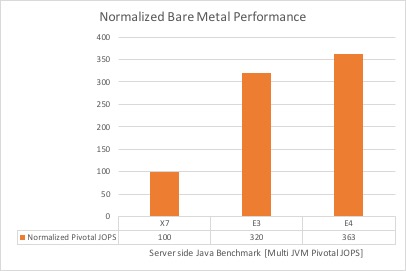
Figure 3: Normalized bare metal performance results
The E4 Standard instance delivered a 13% increase in Java performance compared to E3 instances and a 263% increase compared to X7 instances.
Figure 4 shows the results of running the Java benchmark tests on VMs. All the Java tests were run on 8-core VMs because of minimum memory requirements.
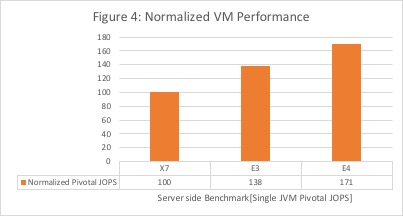
Figure 4: Normalized VM performance results
The E4 VM instances delivered a 24% increase in Java performance compared to E3 and a 71% increase in Java performance compared to X7 instances.
Competitive benchmarks
We compared our offerings to what’s available from AWS. As shown in the following graphic, the E4 based instances outperformed the AWS instances in absolute performance and price-performance, with three times better price performance of AWS instances across these benchmarks.
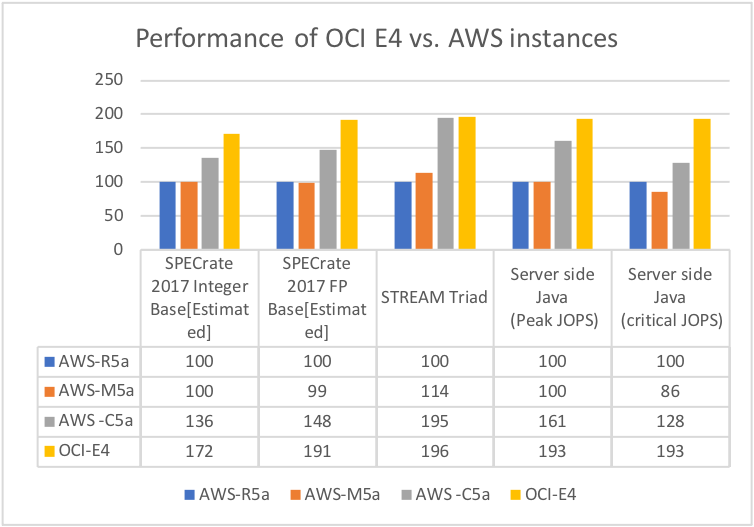
Figure 5: Performance of OCI E4 versus AWS instances
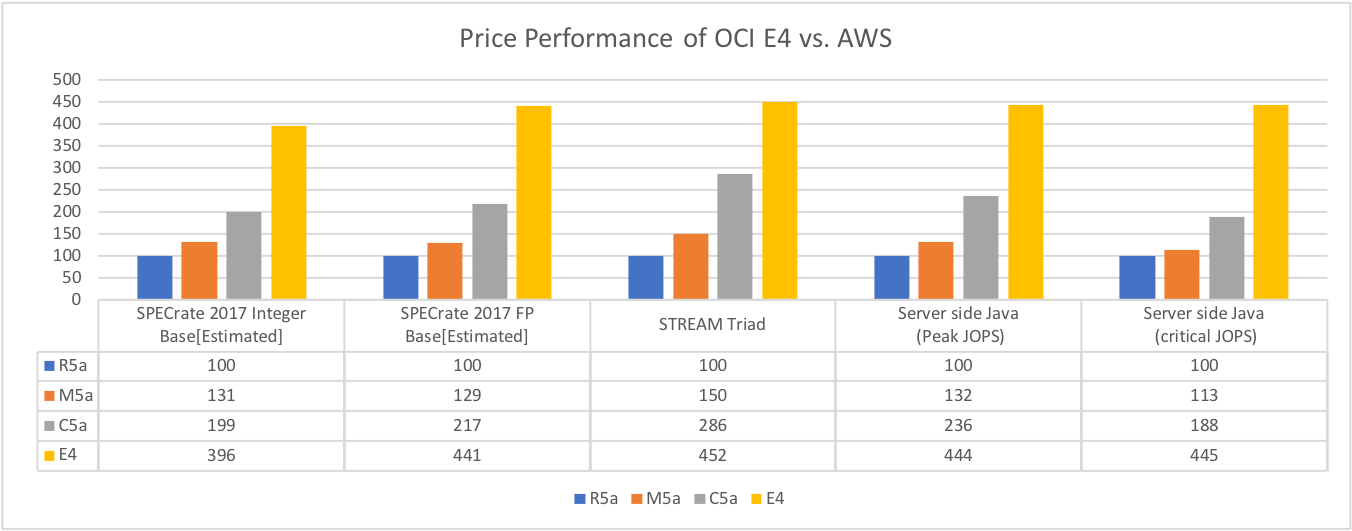
Figure 6: Price performance of OCI E4 versus AWS
Conclusion
You can benefit from this performance by deploying and migrating your workloads to these Compute instances today. To learn more about AMD EPYC cloud solutions for OCI, watch the video from our VP Ross Brown. For more information on the E4 Standard and flexible instances, you can access our documentation. For more Oracle Cloud Infrastructure solutions for AMD EPYC-powered Oracle Cloud instances, you can visit the AMD tech docs and white paper library.
SPEC, SPEC CPU, and the benchmark SPECrate are registered trademarks of Standard Performance Evaluation Corporation (www.spec.org).